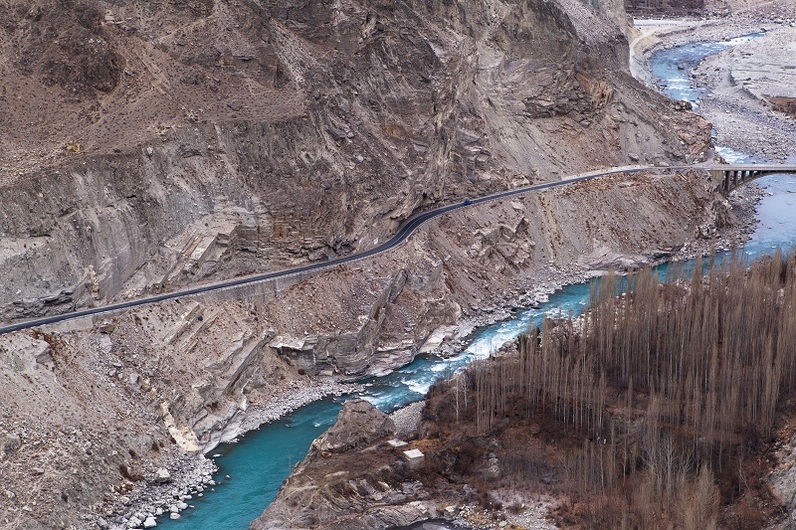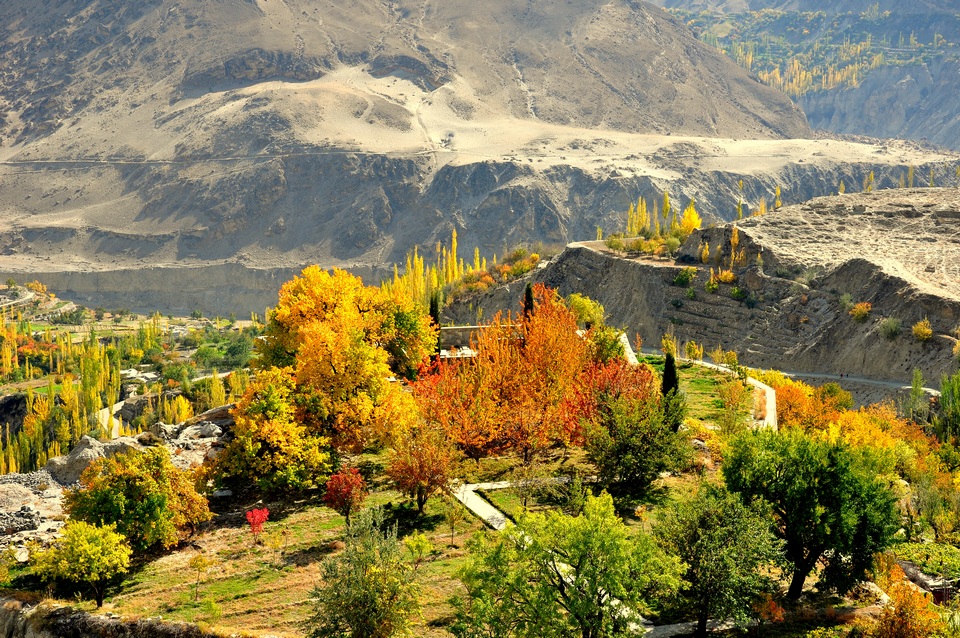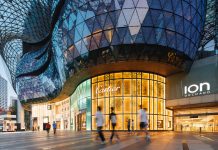Many tourists see Pakistan as an unsafe and isolated country held under oppressive religious laws. As I learned on a recent trip, however, this country is filled with wonderful surprises. Join me discover the life of people on the ‘roof-top’ of the country through My trip to Pakistan blog: Pakistan travel blog — A journey to the roof of Pakistan.
- My trip to Nepal blog — A journey to the sacred land of the world
- Cormorant fishing Guilin — Meet the legendary fishermen of Li river
- My trip to Norway — Exploring the world of fjords
- Pinoy dessert — 5 typical Pinoy sweet dishes for dessert
- Mongolia travel blog — Explore the life of Mongolian nomads in the heart of Gobi desert
Pakistan is the Karakoram, a magnificent mountain range spanning the borders of Pakistan, India, and China, inspiring thoughts of the arduous camel caravan journeys along the Silk Road. Pakistan is a rich and distinct culture that can be seen through the character of its long-haul trucks. Pakistan is the simple, peaceful lifestyle of its people in the enchanting Hunza Valley. I went to Pakistan to discover these wonderful things and ended up discovering myself as well.

The Karakoram, a great challenge on the Silk Road

The Silk Road was an ancient network of trade routes established during China’s Han Dynasty. It originated from the Chang’an Citadel (present-day Xi’an) and stretched to the Roman Empire. Camel caravans had to transport heavy loads from China to other nations by traversing the frigid and treacherous Pamir Mountains and the isolated Karakoram range, which connects Pakistan and Kashgar—an oasis city in Xinjiang, China.
Traveling the Karakoram highway today remains a dangerous challenge. Its location at the height of 4,730 meters above sea level makes it the highest paved international road in the world. This mountain road is sometimes unsafe, full of zigzagging curves and easily affected by flash floods. Flash floods and landslides have claimed thousands of lives on this road.

In order to experience traveling a branch of the Silk Road, I bought a one-way bus ticket from Rawalpindi to Hunza Valley. They do not sell return tickets at the same location because the weather in Karakoram is unpredictable and affects scheduling. The bus departs at 9 pm every day and arrives at Hunza at 6 pm the next day if the weather is good (the road is nearly 700 km). I had to make ten copies of my passport and visa to submit at security posts, as this road belongs to the sometimes unstable Kashmir autonomous area.
As the bus was preparing to depart, a man in civilian clothing used a small camera to take a picture of each passenger’s face. A local friend explained that due to insecurity in the country, drivers or police will keep passengers’ images to ensure their records in case of unexpected events. I started sweating when I saw the driver place a gun beside the steering wheel. It seemed to demonstrate how unsafe the area could be.

The bus ran relatively fast until dawn, then stopped for two hours by a roadside inn to allow the driver to rest. In the morning we got back on the bus to undertake the difficult-to-access Khunjerab stretch of mountain road. It began to rain lightly. Drivers in Kashmir are afraid of heavy rains, as they can cause landslides and block buses. Fortunately, we arrived at Hunza on schedule.
The way back, however, did not go as smoothly. The Karakoram was blocked by hundreds of huge rocks falling down the road. I had to stay in Hunza an additional two days until the snow and rain cleared.

“Jingle Trucks” on the snowy mountains
Pakistan impressed me with its magnificent scenery and unshakeable religious values, however what surprised me most about the country was its colorful lorries. These trucks carry Pakistan’s mysterious culture with them up the imposing snow mountains.
Visitors to Pakistan will be delighted to see the country’s unique take on lorry travel, with brightly colored and intricately patterned trucks traversing the highways. Many have been captivated and delighted by this unique aspect of Pakistan.

These special trucks, known as “Jingle Trucks,” have become a global phenomenon. Truck and bus drivers across the country customize their vehicles according to their own particular styles. Since they sometimes have to be away for months at a time, many drivers incorporate elements that remind them of home onto their trucks. Decorations may include paintings and calligraphy, or even structural changes like mirror work and wooden door carvings. Depictions of historical scenes and poetic verses are also common. Chains and pendants sometimes dangle from the front bumper. Outfitting is often completed at a coach workshop.

Many researchers have studied the unique cultural elements behind these elaborate decorations and analyzed how this subculture affects truck drivers’ lives, culture, religion and spirituality.
The tradition of decorating carriages appeared long time ago in Pakistan and some other South Asian countries including Afganistan, India and Bangladesh. In 1920, the Kohistan bus company invited skilful painters from Ustad Elahi Bakhsh to decorate their buses in the hopes of attracting more passengers. They found painters from Punjab, the same place where artists had gathered to decorate the palaces and temples of the Mughal Empire. Modern science and technology has allowed for more intricate and elaborate designs that retain original cultural character.
I was fascinated in the patterns on the Jingle trucks and the stories they told. Their wheels, roofs, chassis and bodies were covered with mysterious patterns. It was an unforgettable experience to sit in a truck slowly crawling the 4,693 meter high Khunjerab mountain road and listen to bells and tintinnabula sing below us on the chassis. The driver explained that in addition to their decorative function, bells helped drivers concentrate on their work and warded off evil spirits.

There is a wide range of patterns displayed on each truck. These are categorized into five main groups:
- Kashmir landscapes, pastoral harvest scenery, images of beautiful young women and romantic verses;
- Patriotic symbols and images of political figures;
- Venerated symbols such as goat’s horns, Tibetan ox’ tails, and traditional temple costumes and flags;
- Abstract religious icons like eyes, and sacred animals like fish and peacocks;
- Religious symbols or images such as Buraq, the horse that the Prophet Muhammad rode upon.
Decorations and styles vary across regions. Karachi, Pakistan’s largest city, is considered the capital of these special trucks. The cities of Rawalpindi, Swat, Peshawar, Quetta and Lahore also have their own characteristics. Trucks in Balochistani and Peshawari tend to be decorated with wood, while plastic is more commonly used in Rawalpindi and Islamabad. After purchasing a truck, its owner will take it to a garage to decorate his “second house.” He can decorate it as he pleases. These modifications can cost between USD 3,000 and 5,000.
Jingle Trucks represent Pakistan’s culture, history and regional customs. Each colorful truck is a miniature surrealist spiritual world that helps protect its driver from danger on the winding mountain roads.

Peaceful life in the Hunza Valley


Before I planned my trip, I read Three Cups of Tea by American writer Greg Mortenson, which is about the author’s mission to educate those living in poverty in Pakistan and Afghanistan. The descriptions in the book made me uneasy, but also gave me the desire to visit Gilgit–Baltistan, whose imposing landscapes and secluded villages are loosely controlled and threatened by bandits.

Gilgit is the urban center of Kashmir and the largest city in the northern region of Pakistan. The Hunza Valley, 50 kilometers outside of Gilgit, is home to many Muslim communities, and is famous for its magnificent snow-capped mountains. Even native citizens of Pakistan try to visit this area at least once in their lives.

On the long bus ride to the valley, I met Sharoz, a doctor. He told me that Hunza had formerly been a land of kings, and thus life in the valley was quieter and more peaceful than life in Gilgit.

Sharoz invited me to visit his house that misty afternoon. His house was one of the many earthen structures precariously perched upon the mountains around the Hunza River. It got very cold at night. Sharoz told me that the local people often go to bed early because of frequent power cuts; and most houses had one or two generators.



The people in the Hunza Valley earn their living by farming. Each family pastures hundreds of cattle and grows produce to sustain themselves and to sell at the local market. Merchants also purchase these goods and transport them to Gilgit and the neighboring areas of Kashmir. Some families run travel businesses as well. Spring is an ideal time to visit this area, as the cherry blossoms can be seen in full bloom along the snowy mountainsides.



By the fire, I shared a delicious lamb stew with Sharoz’s family. I felt surrounded by the clear, peaceful atmosphere of the Hunza Valley.

Further information
Eleven notes about traveling in Pakistan
- Visa: You can ask for a 14 day tourist visa at the Embassy of Pakistan in Ha Noi. You must prepare the necessary documents, including your passport, two photos, a work certificate and an invitation from Pakistan.
- Flights: There are no direct flight to Pakistan from Vietnam—you must book a transit flight through Malaysia, Singapore or Thailand. Lahore and Karachi receive many flights from Southeast Asia.
- Public transportation: Taxis, rickshaws and buses are popular means of public transportation in Pakistan. Taxis and rickshaws have no fare calculators, and you will have to bargain with drivers in advance. Transport expenditure is relatively cheap, about 2/3 of the cost in Vietnam.
- Long-haul transport: You travel by plane, train, and local or luxury bus. If you have time to spare, you should take high-quality Daewoo buses, which can preserve your health and security.
- Cuisine: Pakistani cuisine is plentiful and diverse. Like most countries in South Asia and the Middle East, Pakistanis use a wide range of spices and eat lots of beef, lamb, goat and chicken—although they do not eat the skin, legs, wings and heads of chickens. Pakistan also grows many types of fruit, including mandarins, bananas, apples, persimmons and pomegranates. Be sure to try tea with milk, a popular drink in Pakistan. It costs about VND 5,000/cup.
- Accommodation: Hotels in Pakistan tend to be rather expensive and low-quality. Most backpackers avoid hostels in Pakistan. You can book a private room guesthouse or a 2–5 star hotel.
- Photography: The local people enjoy taking photos and selfies with tourists. This is one of the few Muslim countries where you can easily take photos, even with Muslim women. However, always ask permission before taking photos, and do not take photos in restricted areas, especially police stations.
- Electricity and infrastructure: Electricity is a pervasive problem in Pakistan. Most houses have electric generators because of frequent power cuts. You can use two-pin plug to charge your electronic devices. Pakistan’s road system is fairly good, however some roads with heavy truck traffic—such as Karakoram Highway—are quiet treacherous.
- People: The Pakistani people are friendly and hospitable and have a great sense of humor.
- Security: Police stations and police cars can be seen everywhere in Pakistan. Most hotels, restaurants, banks and goldsmith’s shops are protected by armed guards.
- Inspiration: Read Three Cups of Tea by Greg Mortenson as an inspiration for your trip.

This blogger, nicknamed Nhung Buoc Chan (“Steps”), has set foot on 72 countries and territories. In 2017 he traveled along the perilous Karakoram Highway in Pakistan. Beneath its strict system of laws and beyond the stereotypes that haunt the minds of many, Pakistan is a friendly Muslim nation, endowed with breathtaking natural sights and a brilliant cultural heritage. “Steps” took a solitary trip to Pakistan to see part of the old Silk Road. He was taken with a traditional Pakistani saying: “The torrential Hunza River still nestles close to the magnificent Karakoram Mountains.” Despite their sometimes unstable and unsafe situation, the Pakistani people’s lives seem to be as peaceful as their souls!































![10 best airports in Asia in 2016 [RANKED] kuala-lumpur-international-airport-best airports in asia in 2016 by skytrax ratings](https://livingnomads.com/wp-content/uploads/2016/08/29/kuala-lumpur-international-airport-best-airports-in-asia-in-2016-by-skytrax-ratings-218x150.jpg)


























